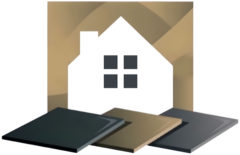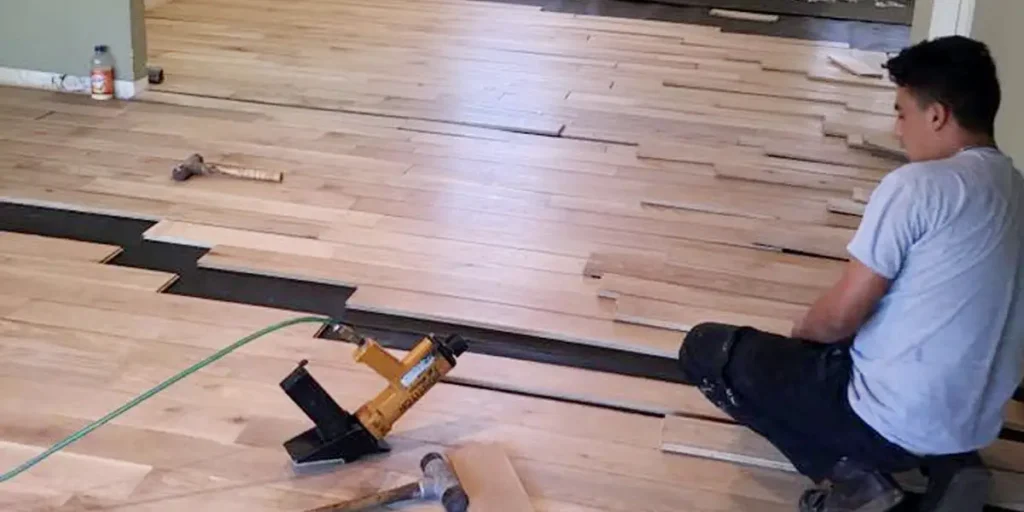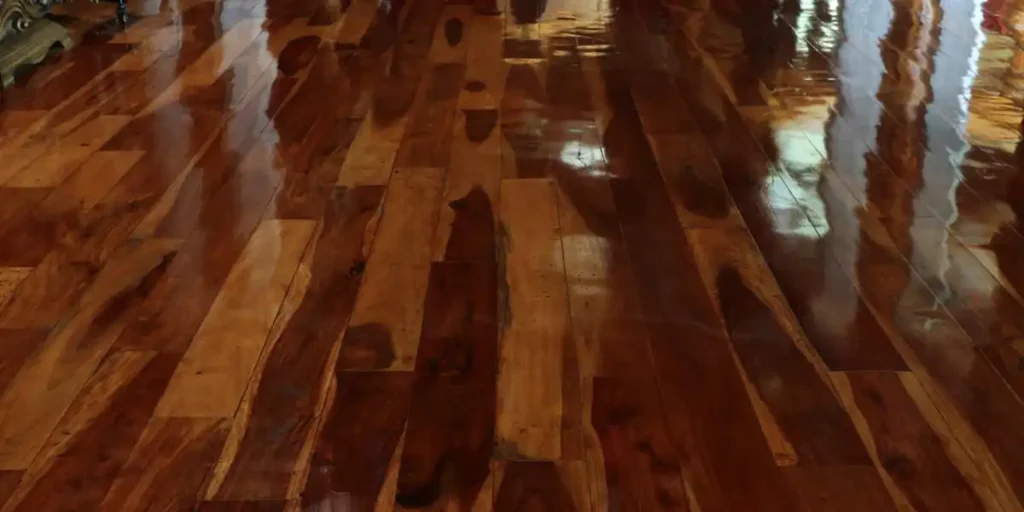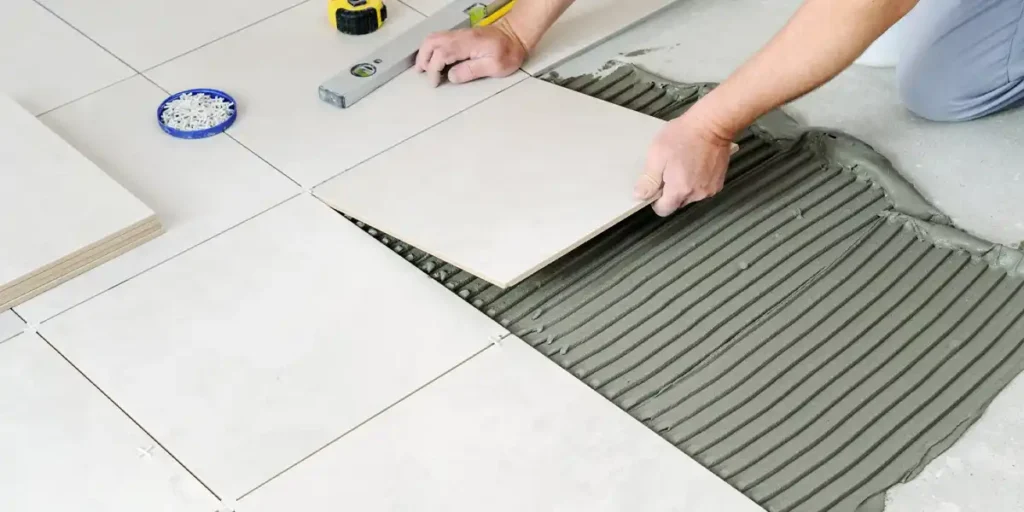Water damage on laminate flooring can be a homeowner’s nightmare, often evoking fears of costly repairs or complete replacement. However, it doesn’t have to spell disaster. With the right tools, knowledge, and approach, restoring your floors to their original beauty is not only achievable but also more manageable than you might think.
Fixing Water Damage in Laminate Flooring: What You Need to Do
The first step is to act quickly. Water damage worsens over time, so addressing the issue as soon as you notice it can save you from further complications. Begin by identifying the source of the water and stopping it immediately, whether it’s a leak, spill, or burst pipe. Once the source is addressed, assess the extent of the damage. Is it confined to a small area, or has the water spread across a larger portion of the floor? This will help determine whether you need minor repairs or a more extensive replacement.
Gather the necessary tools, such as a moisture meter, pry bar, replacement planks, and a dehumidifier. Remove the damaged planks carefully to avoid harming the surrounding flooring, and ensure the subfloor is thoroughly dry before installing new laminate. Preventative measures, like sealing edges and using waterproof underlayment, can protect against future damage, saving time and money in the long run.
Preventing Future Laminate Flooring Water Damage
Fixing water damage is a vital step, but prevention is the most effective way to protect your laminate flooring and avoid costly repairs. By adopting proactive measures, you can safeguard your investment and maintain your floors’ pristine condition for years.
Here’s how to ensure your laminate flooring remains safe from water damage:
1. Address Leaks Promptly
Water damage often starts with unnoticed or unresolved leaks. Regularly inspect areas prone to leaks, such as kitchens, bathrooms, laundry rooms, and basements. Common culprits include leaking pipes, dripping faucets, faulty appliances like dishwashers or washing machines, and damaged roofs.
What to Do:
- Repair plumbing issues immediately, even minor ones. Small leaks can escalate quickly, leading to prolonged water exposure that compromises your laminate flooring.
- Place a tray or waterproof liner under appliances prone to leaks.
2. Clean Spills Immediately
Accidental spills are inevitable, especially in high-traffic areas or households with children and pets. However, leaving water or other liquids on the laminate surface can cause it to warp or bubble.
What to Do:
- Wipe up spills promptly using a soft, absorbent cloth or paper towels.
- Avoid soaking the floor with cleaning solutions; always use a damp (not wet) mop.
- For sticky spills, follow up with a damp cloth and mild cleaner, then dry the area thoroughly.
3. Install Waterproof Underlayment
Waterproof underlayment serves as an additional protective layer between your laminate flooring and the subfloor, particularly useful in moisture-prone areas. This barrier prevents water seepage into the subfloor, which can lead to structural issues.
What to Do:
- During installation, choose a high-quality waterproof underlayment recommended for laminate flooring.
- For added protection, seal seams and edges during installation.
4. Use Rugs and Mats
Strategically placed rugs and mats are an excellent way to reduce direct water contact in vulnerable areas. These accessories act as a first line of defense against spills, splashes, and tracked-in moisture.
What to Do:
- Use absorbent mats in areas prone to splashes, such as near sinks, bathtubs, and toilets.
- Place heavy-duty rugs at entryways to trap dirt, moisture, and debris from shoes.
- Ensure rugs and mats are non-slip and designed for use on laminate to avoid scratches.
5. Maintain Indoor Humidity Levels
Laminate flooring is sensitive to extreme humidity changes. High humidity can cause the planks to swell, while low humidity can lead to shrinking and gaps. Keeping indoor humidity stable is crucial to preserving the flooring’s integrity.
What to Do:
- Use a dehumidifier during humid seasons or in damp climates.
- During colder months, use a humidifier if the air becomes too dry.
- Aim to maintain indoor humidity between 30% and 50%.
6. Conduct Regular Inspections
Prevention is easier and less costly than repairs, but it requires vigilance. Regularly inspecting your floors allows you to identify and address minor issues before they escalate.
What to Look For:
- Check seams and edges for signs of water seepage or warping.
- Inspect high-risk areas such as underneath appliances, near sinks, and along exterior doors.
- Look for bubbling, discoloration, or softness in the laminate surface.
Why Prevention Matters
By implementing these preventive measures, you can significantly extend the life of your laminate flooring and reduce the risk of water damage. Not only is prevention more straightforward than repairs, but it’s also a cost-effective approach to maintaining your floors’ beauty and functionality. Protect your laminate flooring today, and enjoy a worry-free home environment for years to come.
Conclusion
Water damage can be a frustrating and costly issue, but with the right knowledge and proactive measures, you can safeguard your laminate flooring and maintain its beauty for years to come. Regular maintenance, quick responses to spills or leaks, and preventive measures like waterproof underlayment and humidity control can significantly reduce the likelihood of damage.
If water damage does occur, acting quickly is essential to minimize its impact. Whether it’s a minor repair you can handle yourself or a more extensive issue requiring professional assistance, addressing the problem early is the key to protecting your investment.
Don’t let water damage ruin your floors! Contact Cardenas Flooring for professional laminate flooring repair and maintenance today.
Frequently Asked Questions (FAQs)
Can water-damaged laminate flooring be repaired without replacing it?
A: In some cases, yes. Minor water damage, such as small stains or slight bubbling, can be addressed by thoroughly drying the area and using repair kits to restore its appearance. However, extensive damage, like warping or mold, often requires plank replacement. It’s essential to assess the severity of the damage first and act quickly to prevent further issues. If unsure, consult a professional to determine whether repairs or replacements are necessary.
How do I prevent water damage in high-moisture areas like bathrooms or kitchens?
To protect laminate flooring in high-moisture areas, use waterproof underlayment during installation and seal the edges where water might seep through. Place absorbent mats near sinks and appliances prone to leaks, and always clean spills immediately. For bathrooms, consider using laminate specifically designed for moisture resistance or opt for alternate flooring materials better suited for wet environments.
Can I install waterproof laminate to avoid water damage altogether?
Yes, waterproof laminate is an excellent choice for reducing the risk of water damage. It features advanced sealing technologies that make it more resistant to moisture penetration. However, even waterproof laminate isn’t entirely immune to prolonged water exposure. Regular maintenance, prompt spill cleanup, and using moisture barriers can help enhance its durability in wet conditions.
What are the warning signs of water damage in laminate flooring?
Common signs of water damage include warping, bubbling, or cupping of the planks, visible mold or mildew, and discoloration. You may also notice a spongy or soft feeling when walking on the flooring. If you detect these issues, investigate the source of the water immediately to prevent further damage and take steps to repair or replace affected planks.




